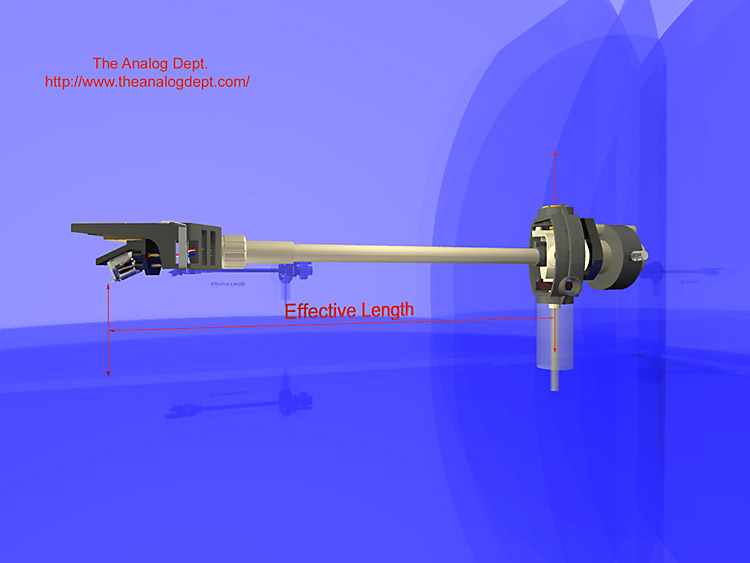-edible zone-
Effective length illustrated.

Above illustration: Effective Length
Def: The straight line
distance from the tonearm pivot to the stylus.

Above illustration: SRA and VTA
Definition: VTA, Vertical
Tracking Angle describes the angle between the record surface and a line
described by the cantilever pivot to the stylus contact area within the
record groove.
Definition: SRA, Stylus Rake Angle, or Scanning
Rake Angle describes the angle between centerline of the stylus and the
record surface. Alternately it can be measured as the angle between a
plane that is perpendicular to the record surface and the stylus
centerline.
Both of these elements are part and parcel of the
same adjustment. If you say you are adjusting VTA, you are also altering
the SRA. The distinction is offered to explain the need for the stylus
and it's cantilever to duplicate the vertical swinging motion of the
original cutter head used to cut the master. Critical for the fine
tuning of elliptical and fine-line stylii, the closer the SRA can be
adjusted to match that of the original cutter head, the more information
the stylus will retrieve from the groove. If we could shrink ourselves
small enough to climb into the groove and see the relationship between
stylus and groove, we would begin thinking in terms of adjusting SRA
because SRA describes the angle of the stylus. VTA describes the angle
of the cantilever.
All images copyright © Steve Clarke